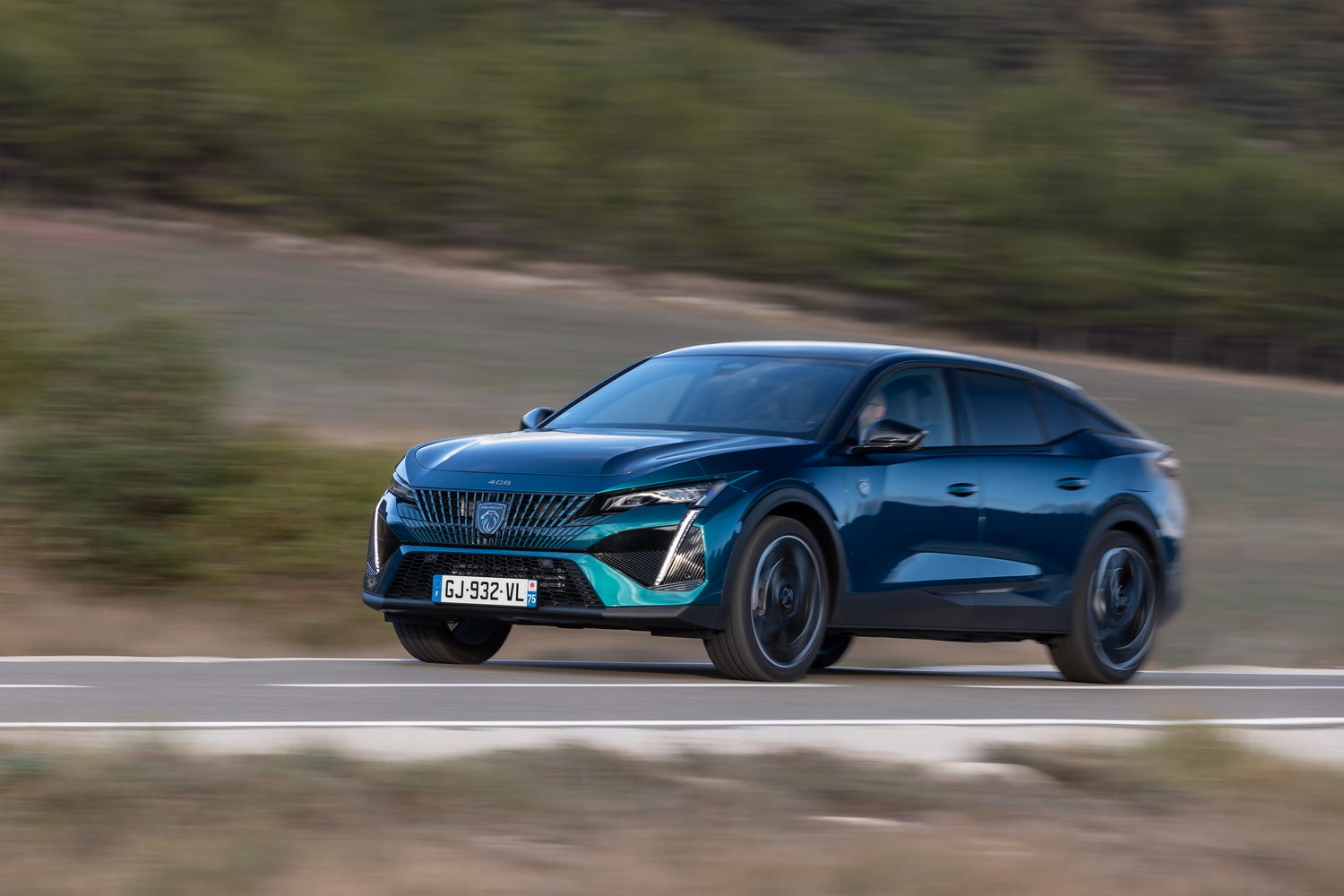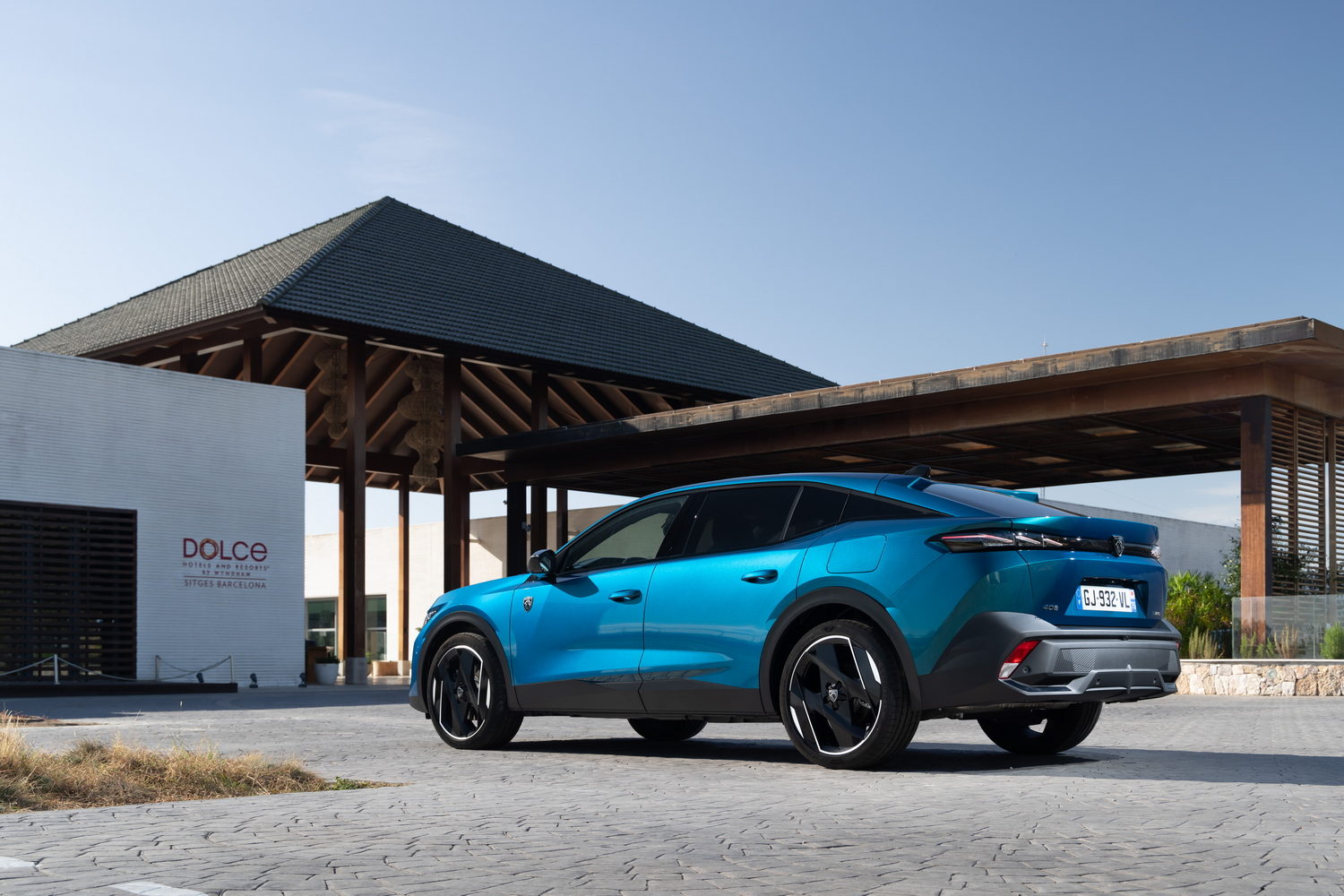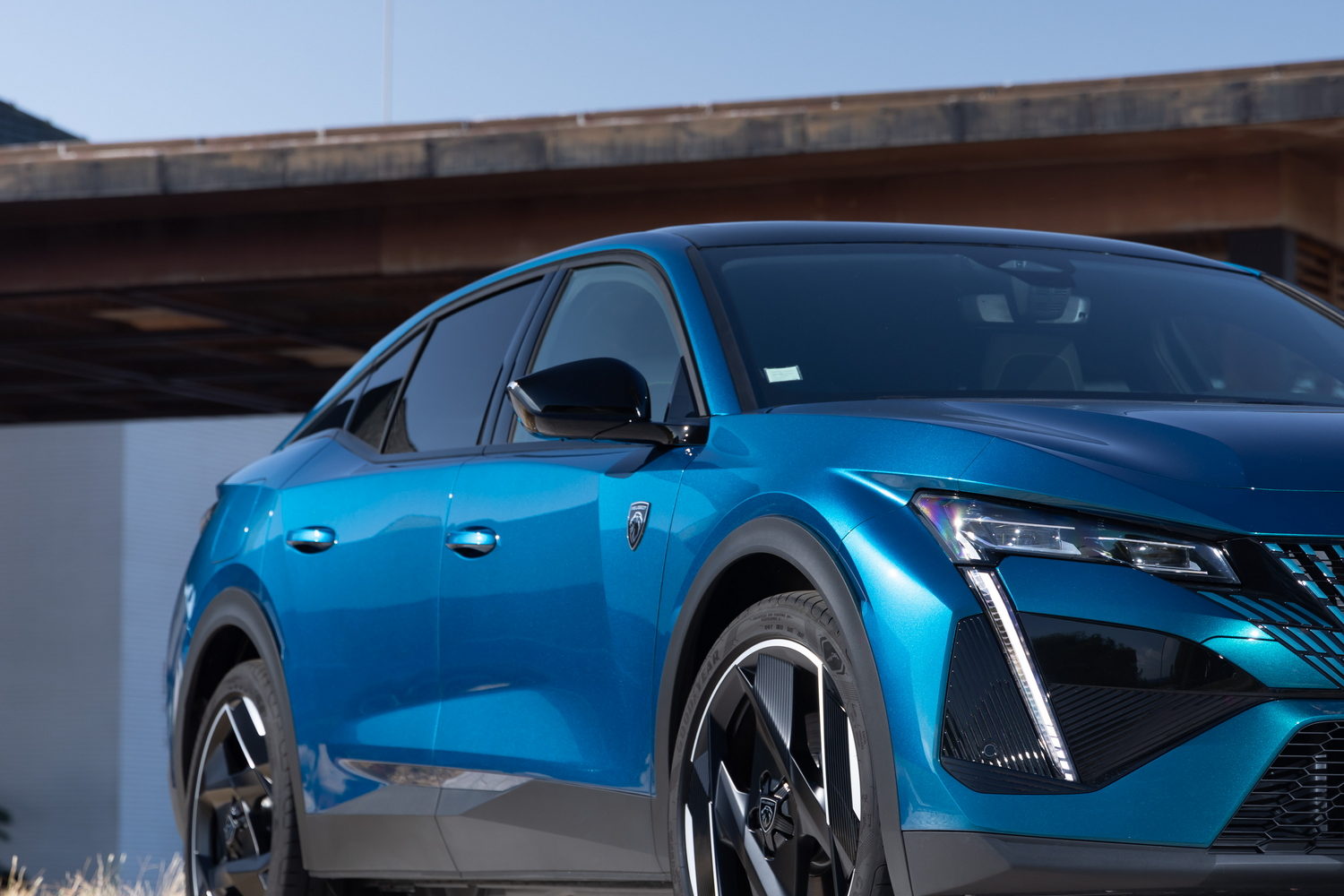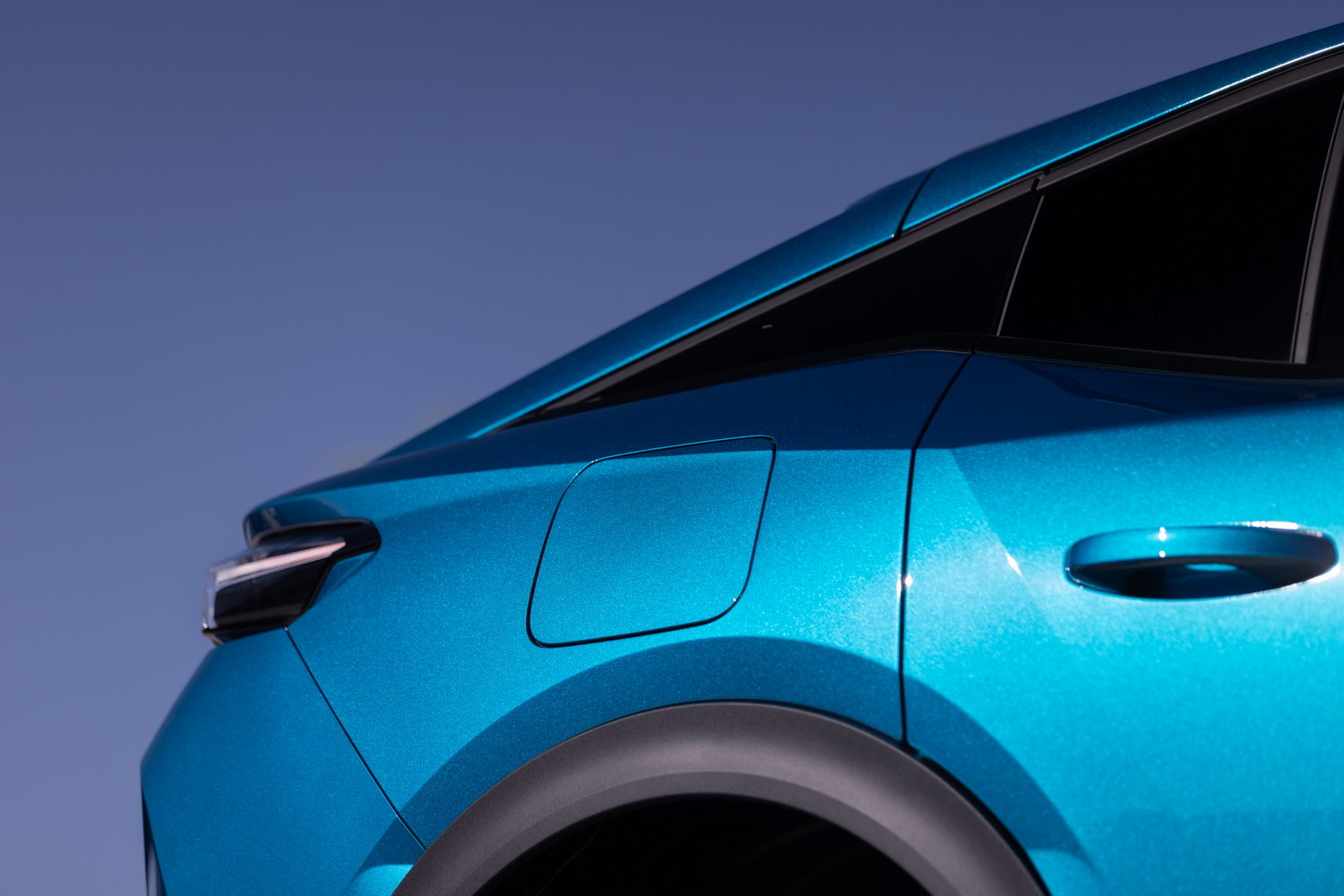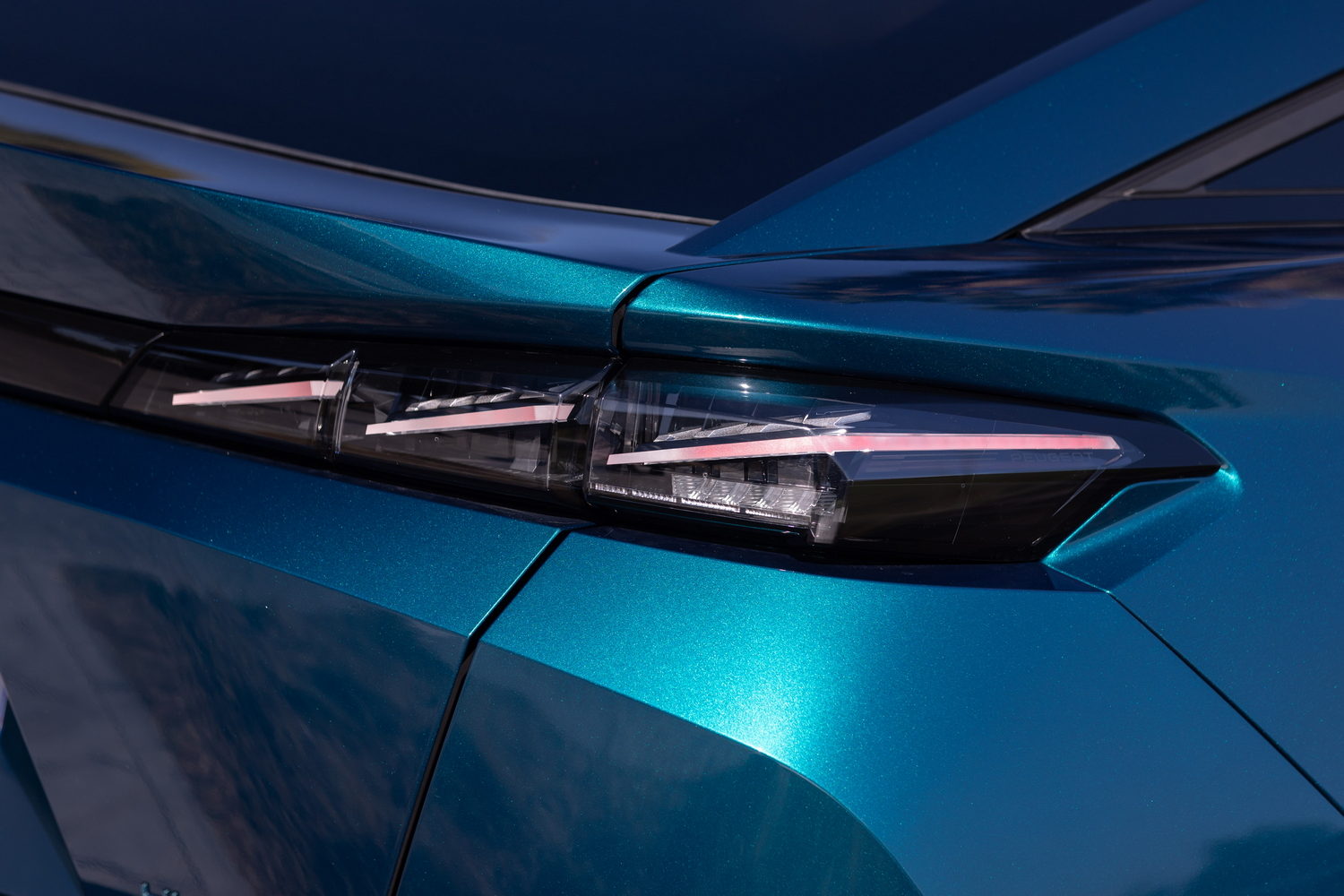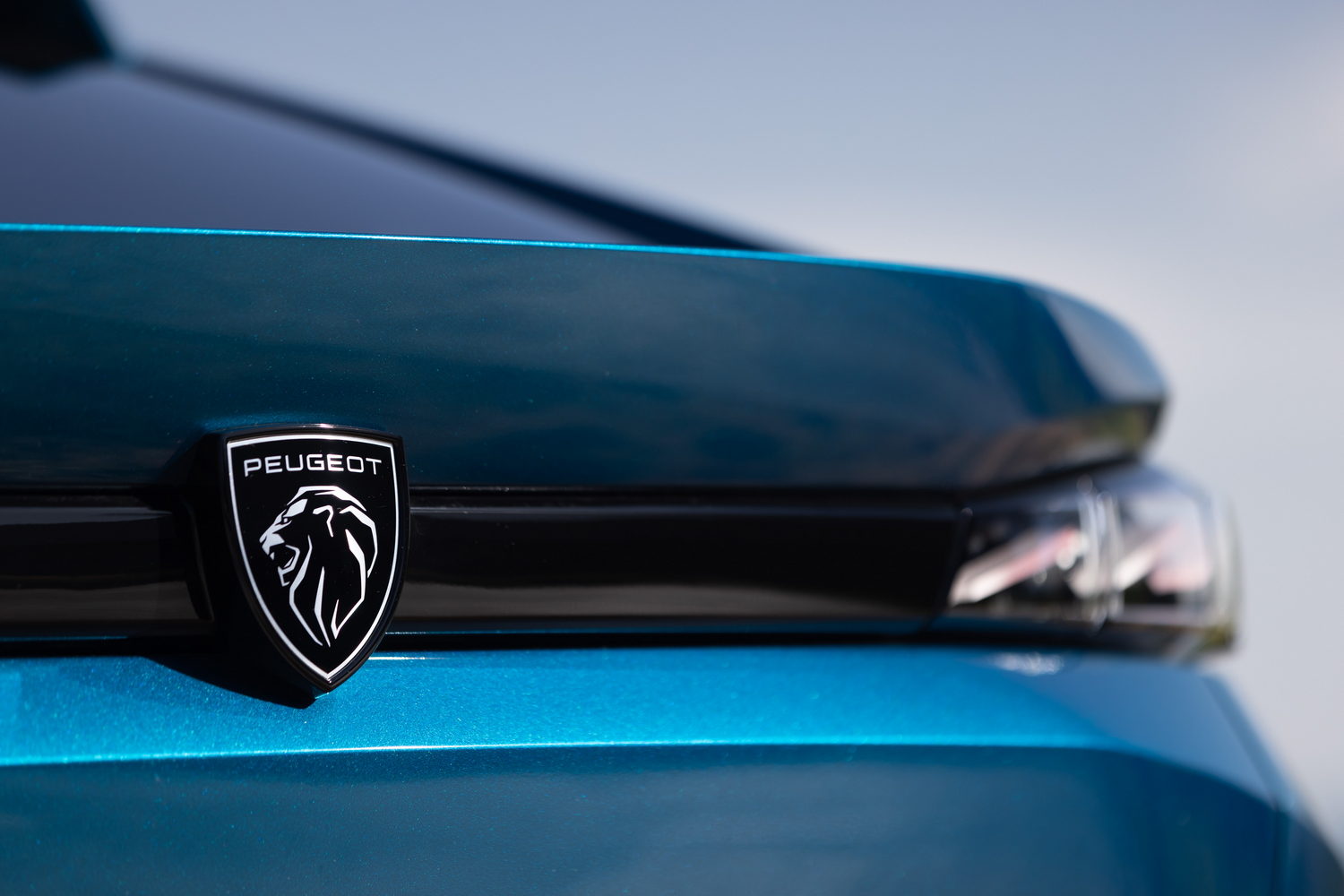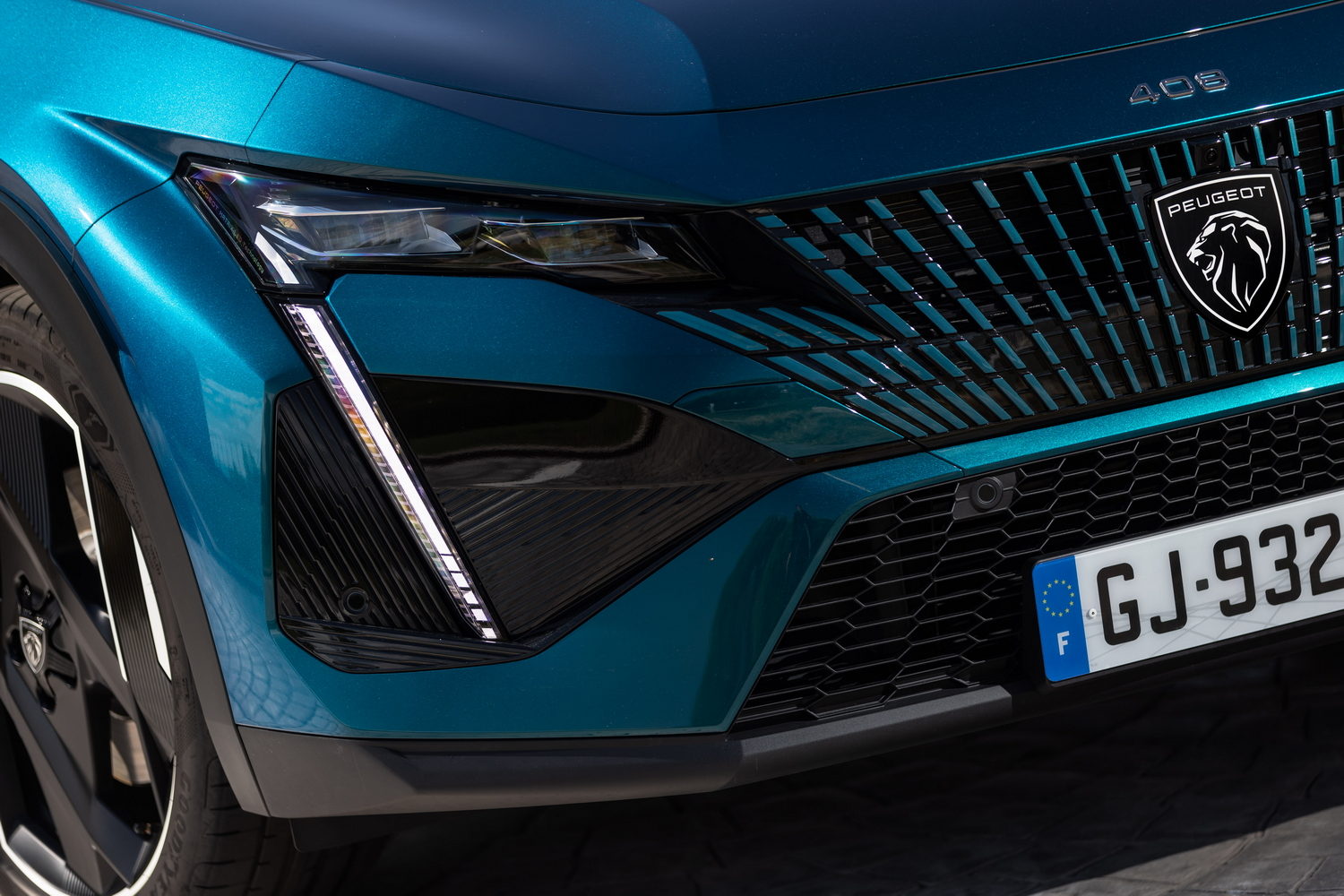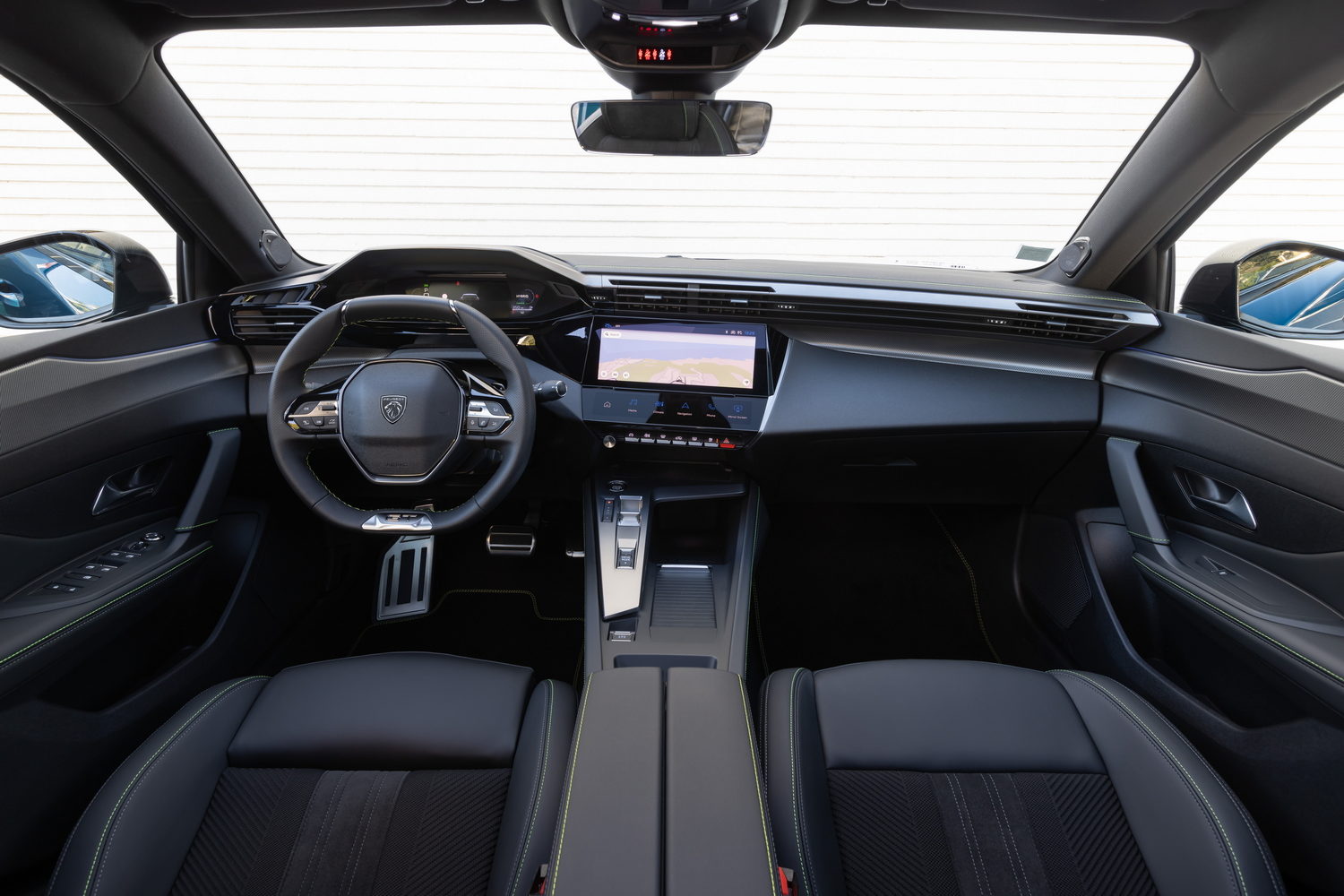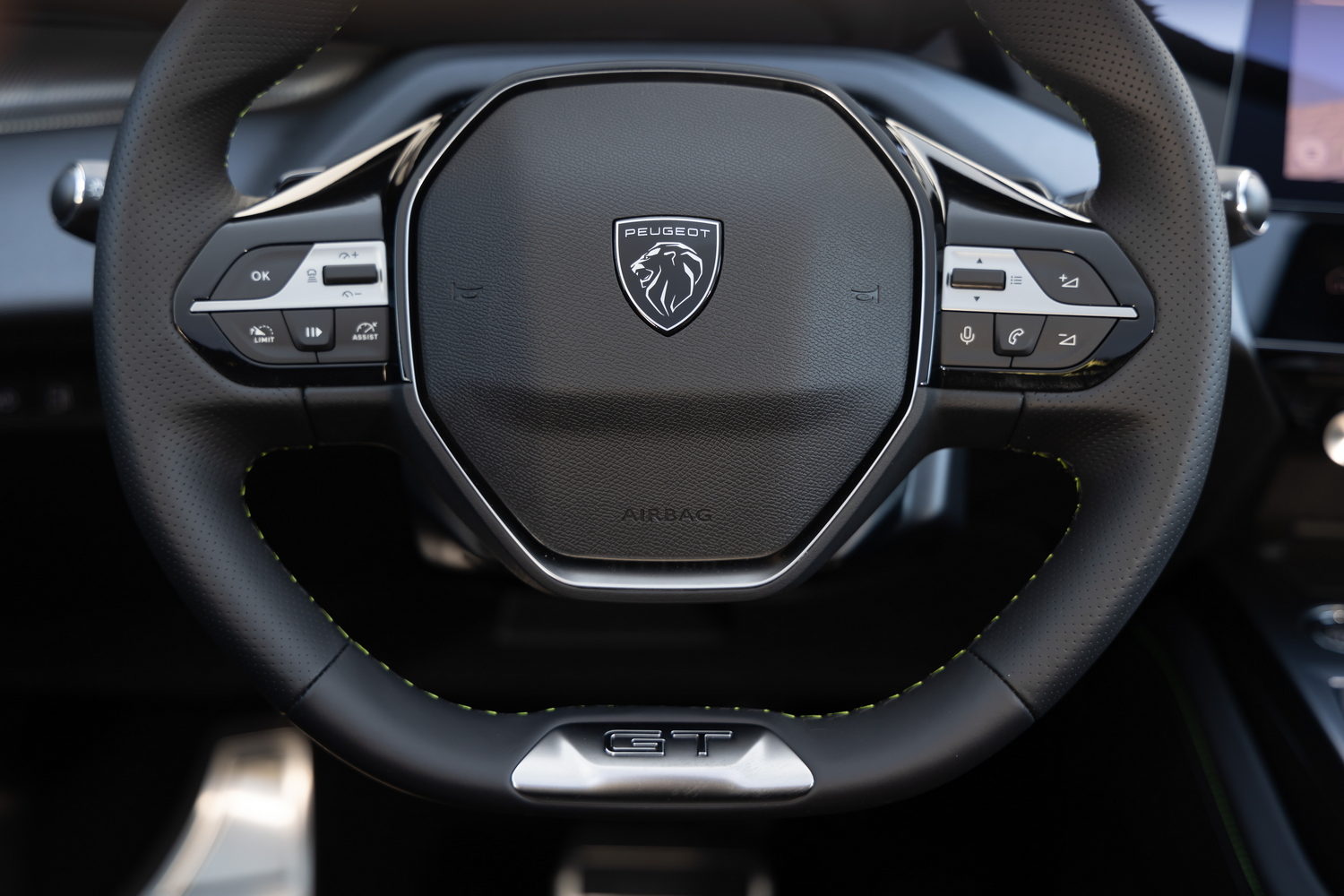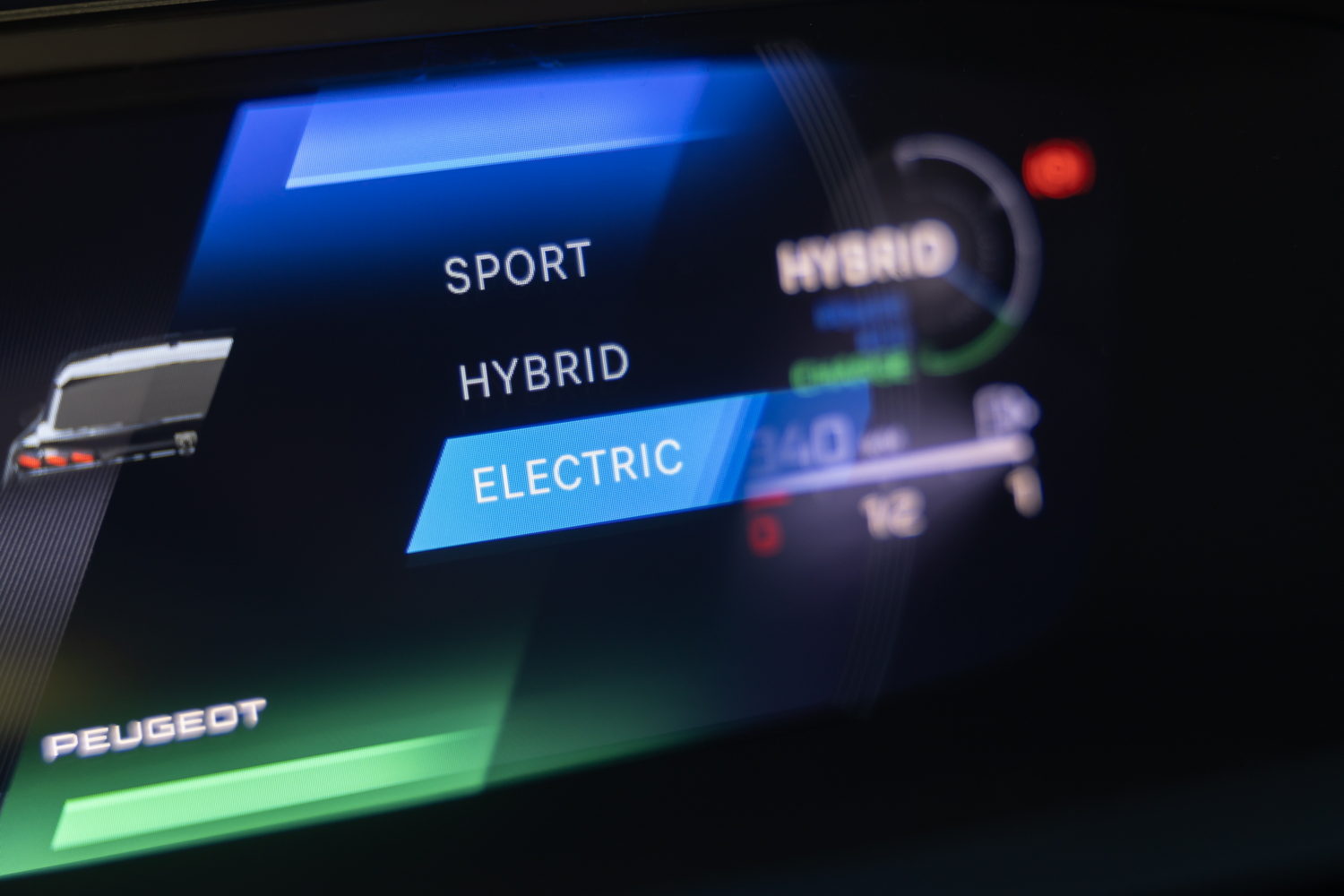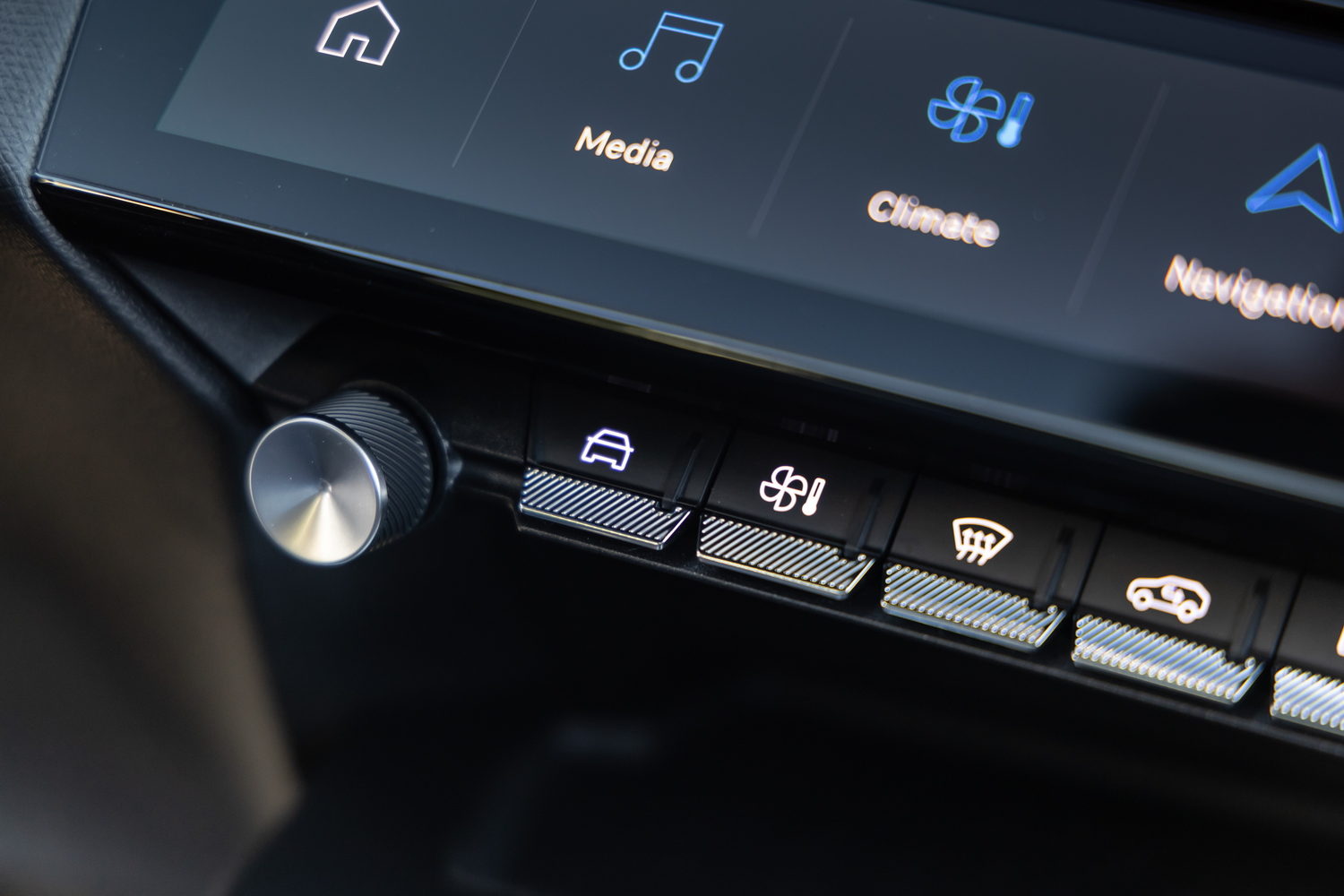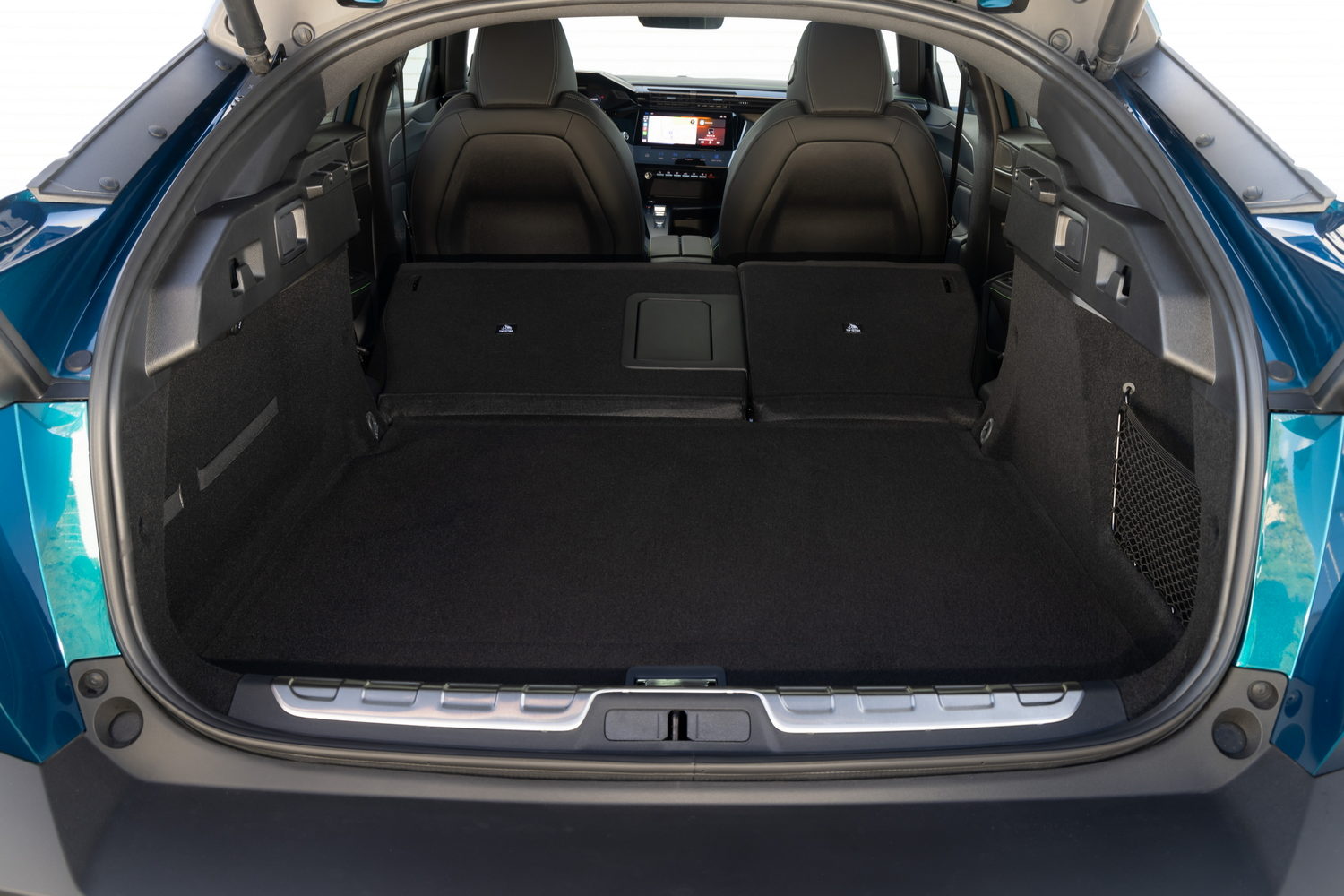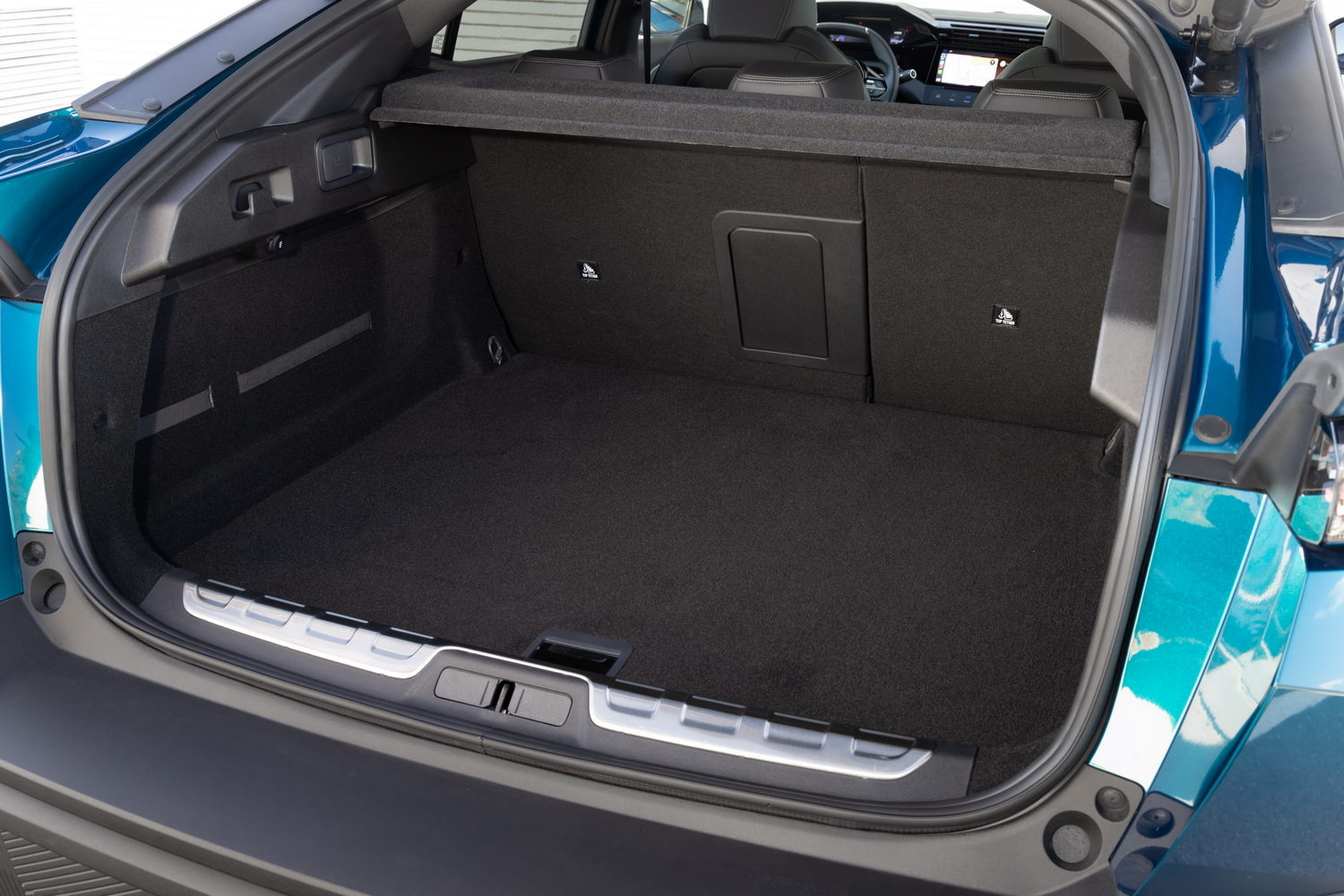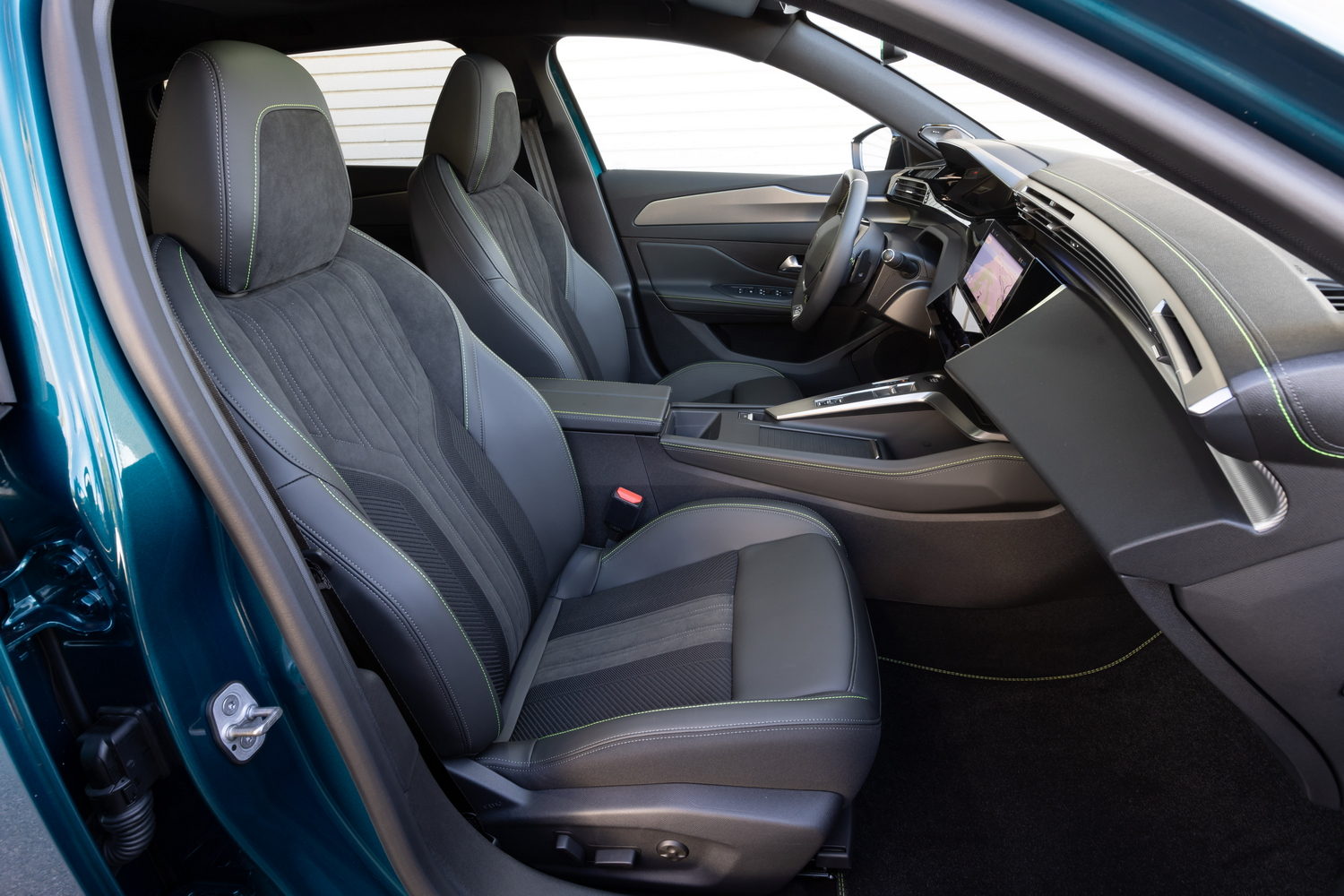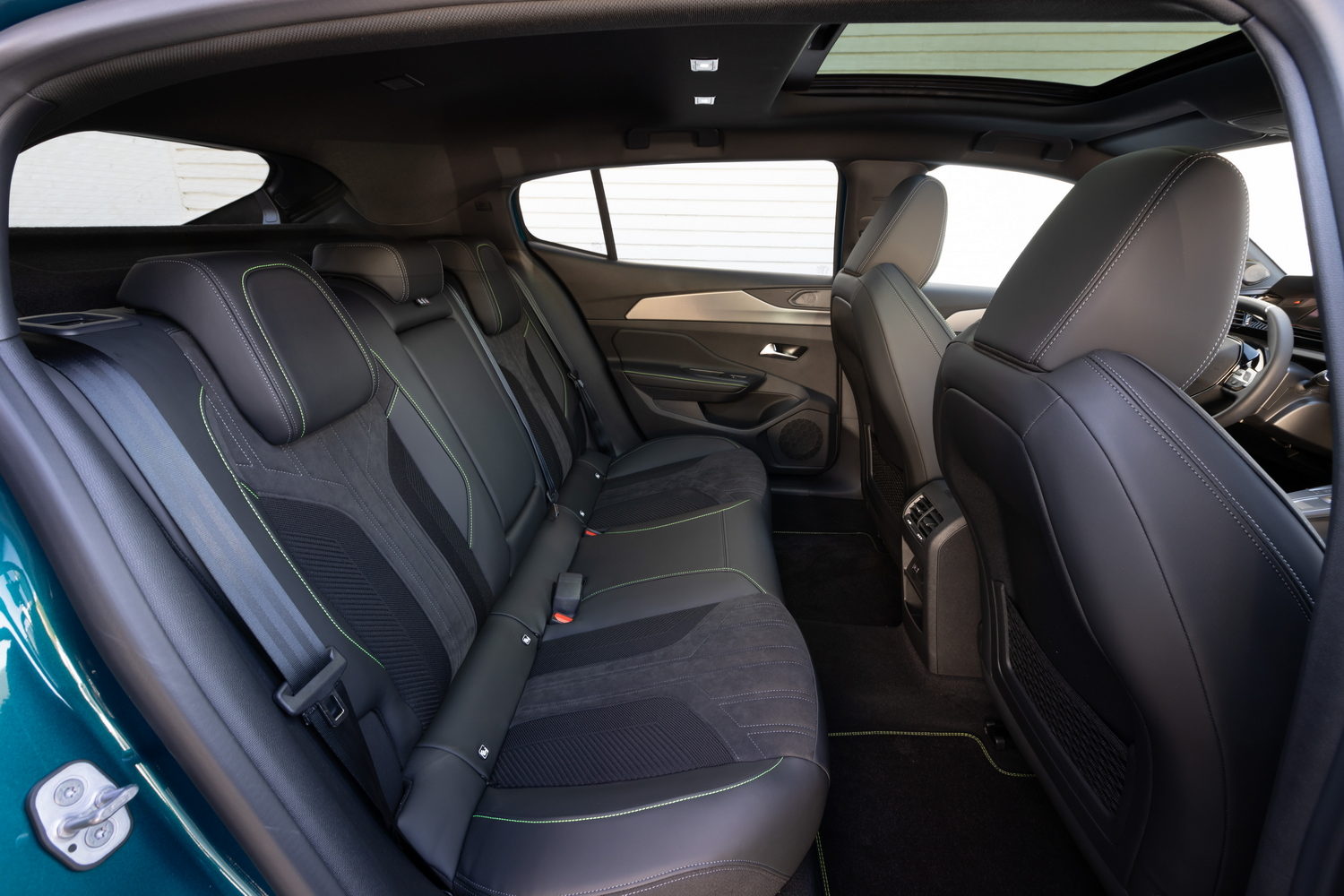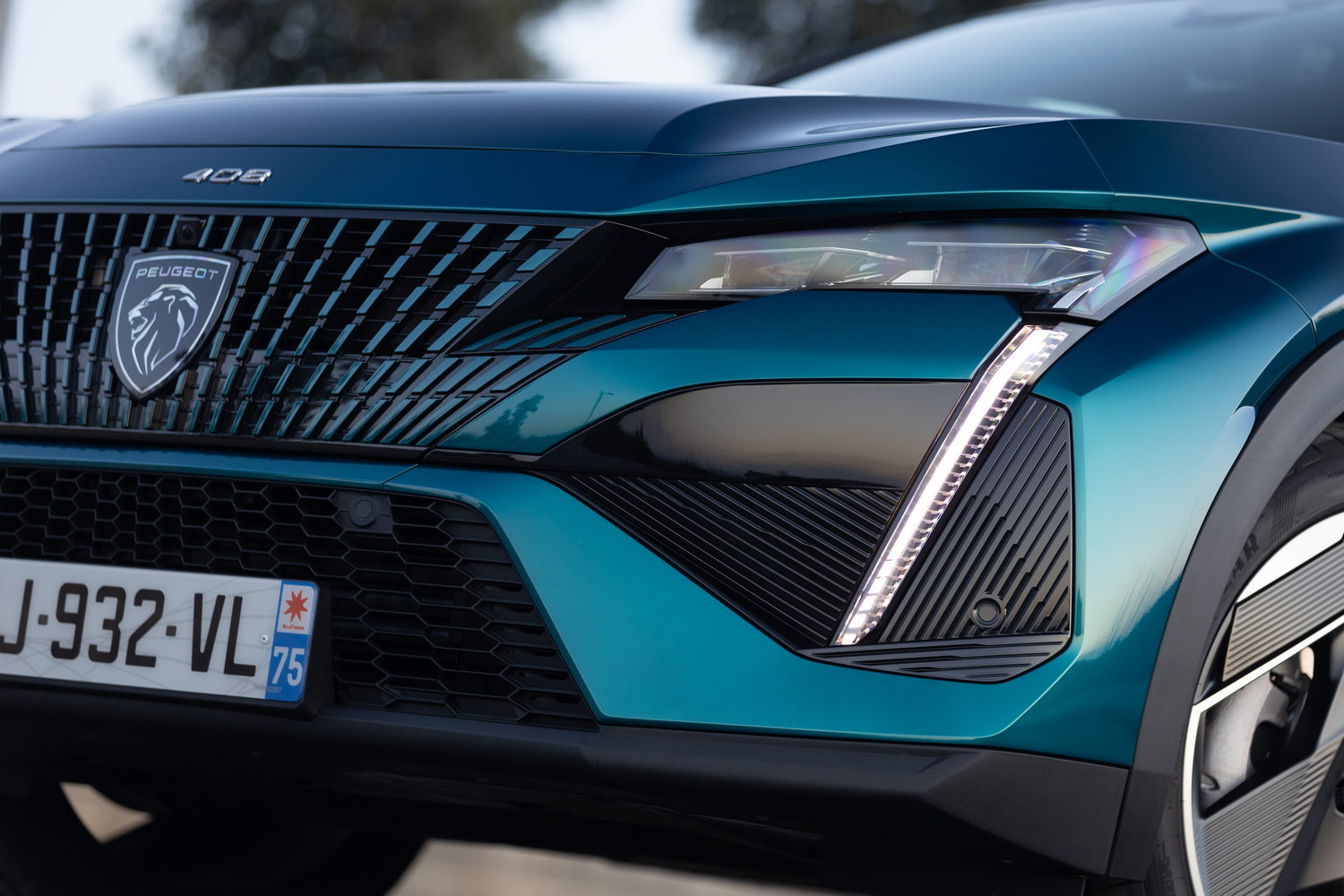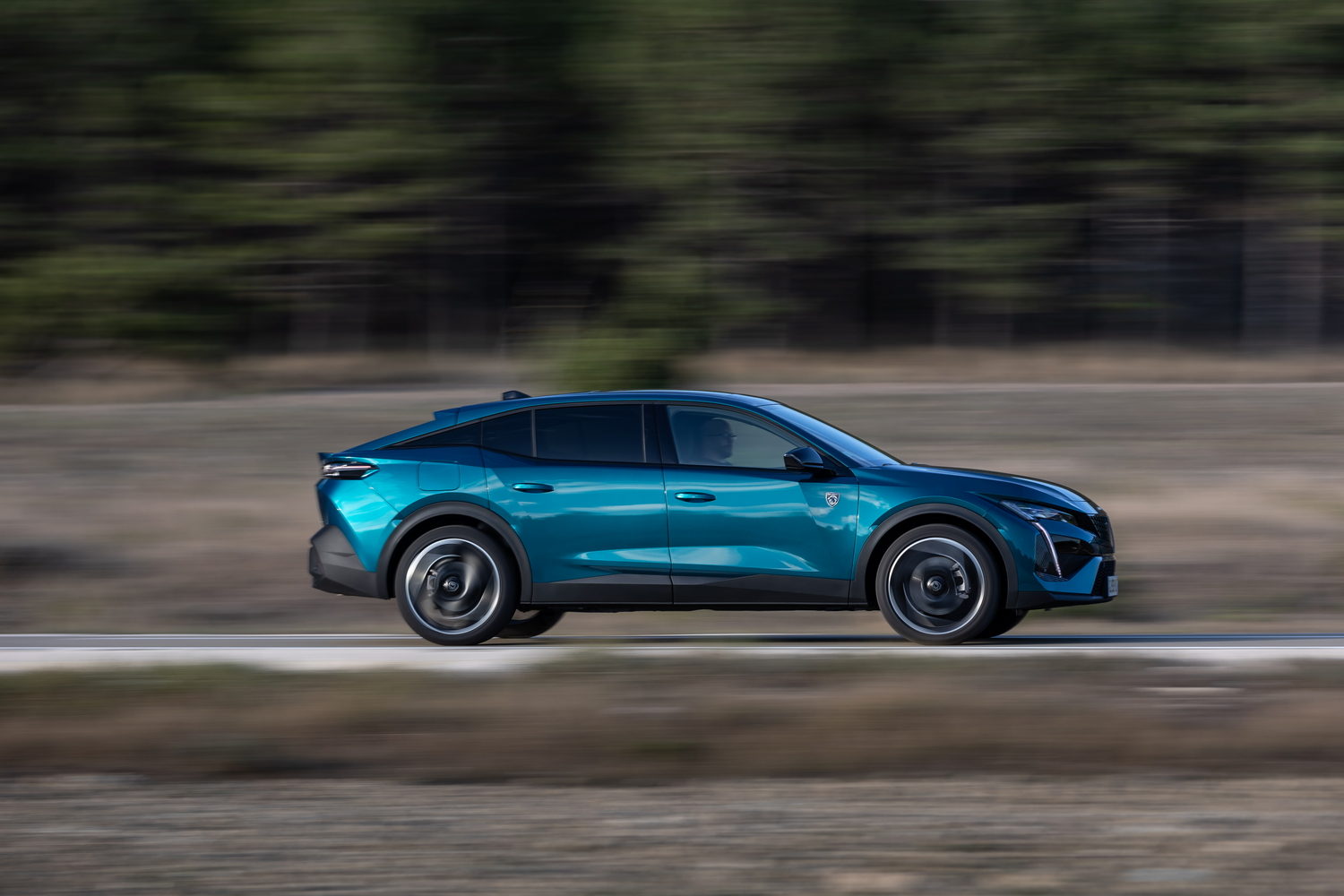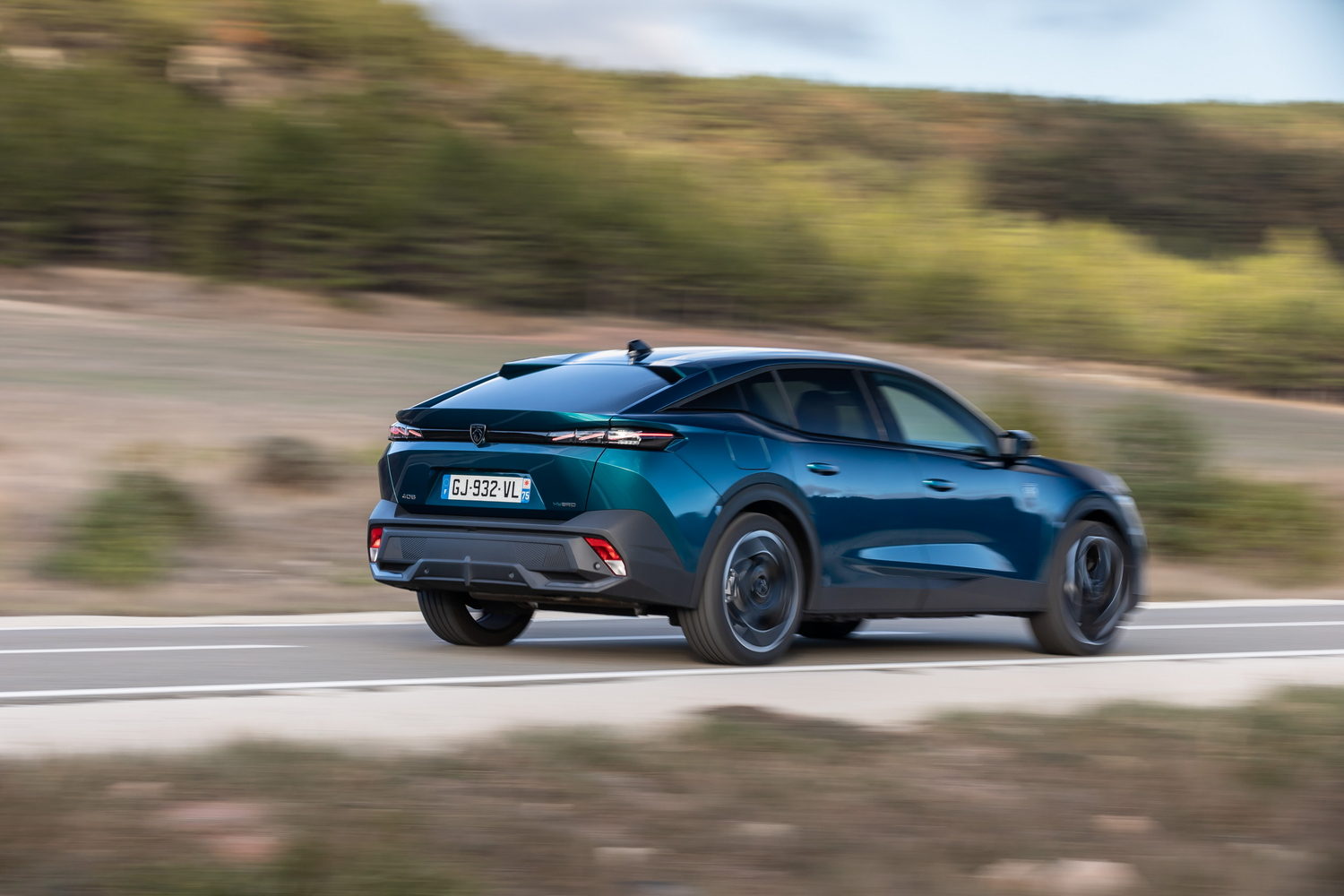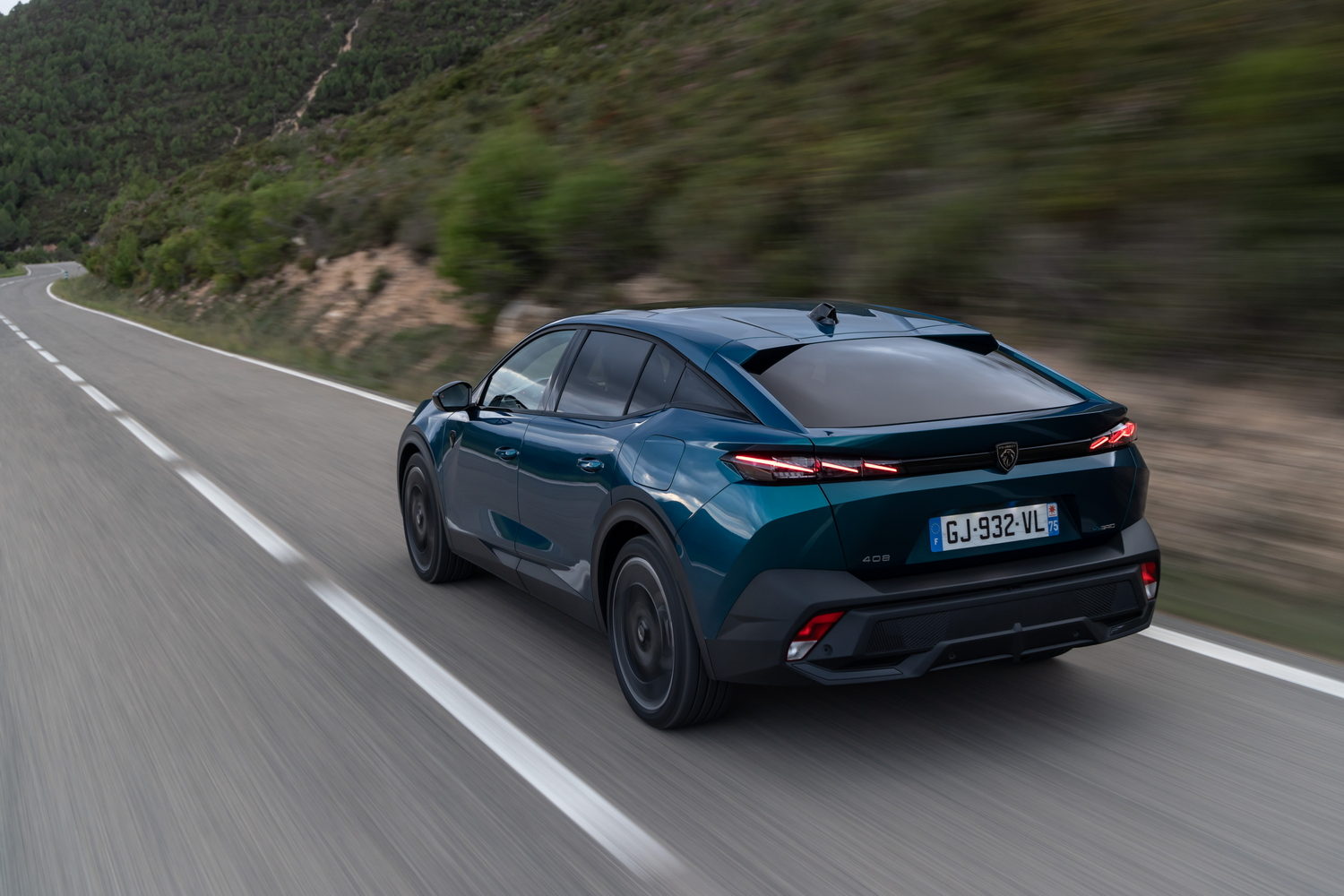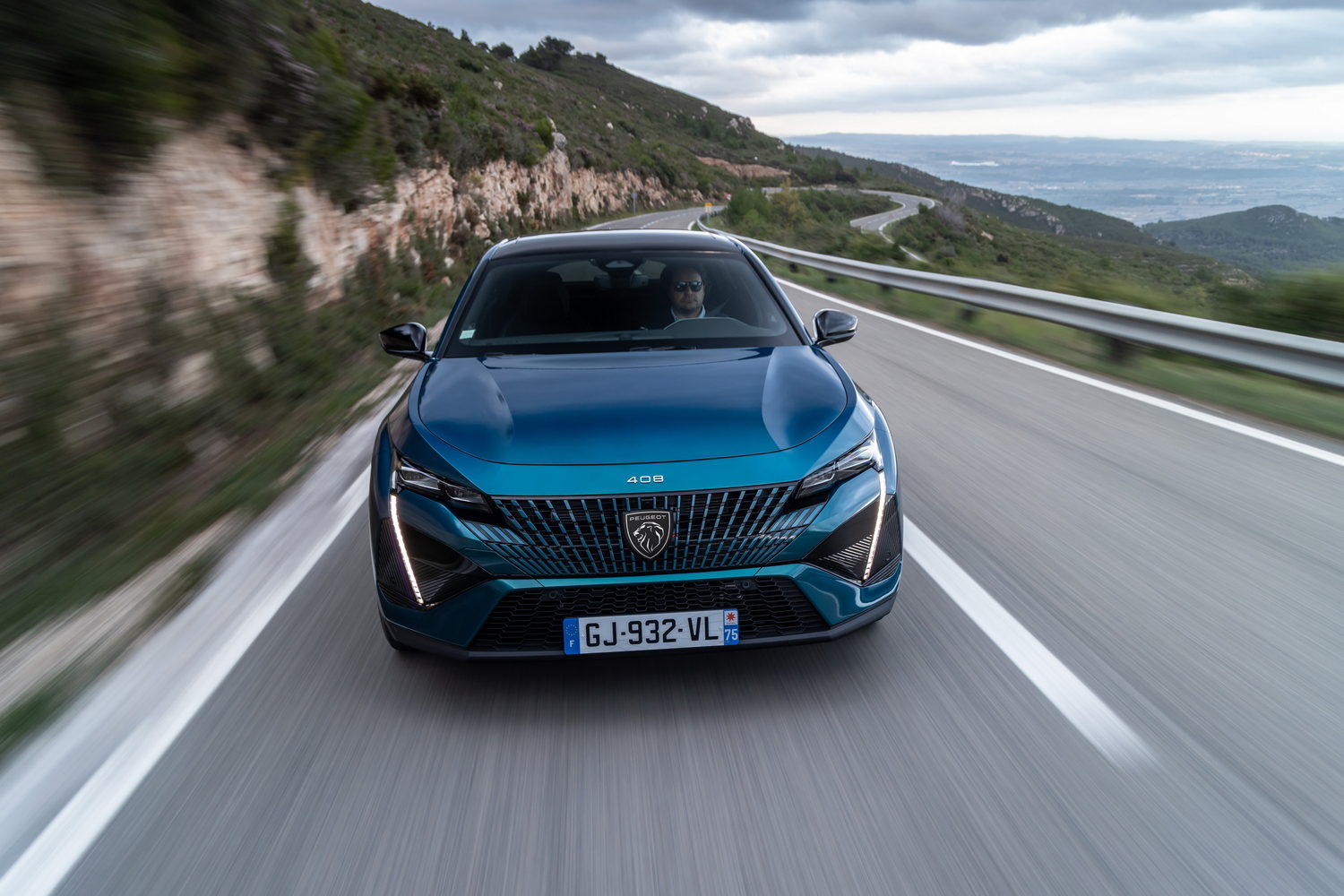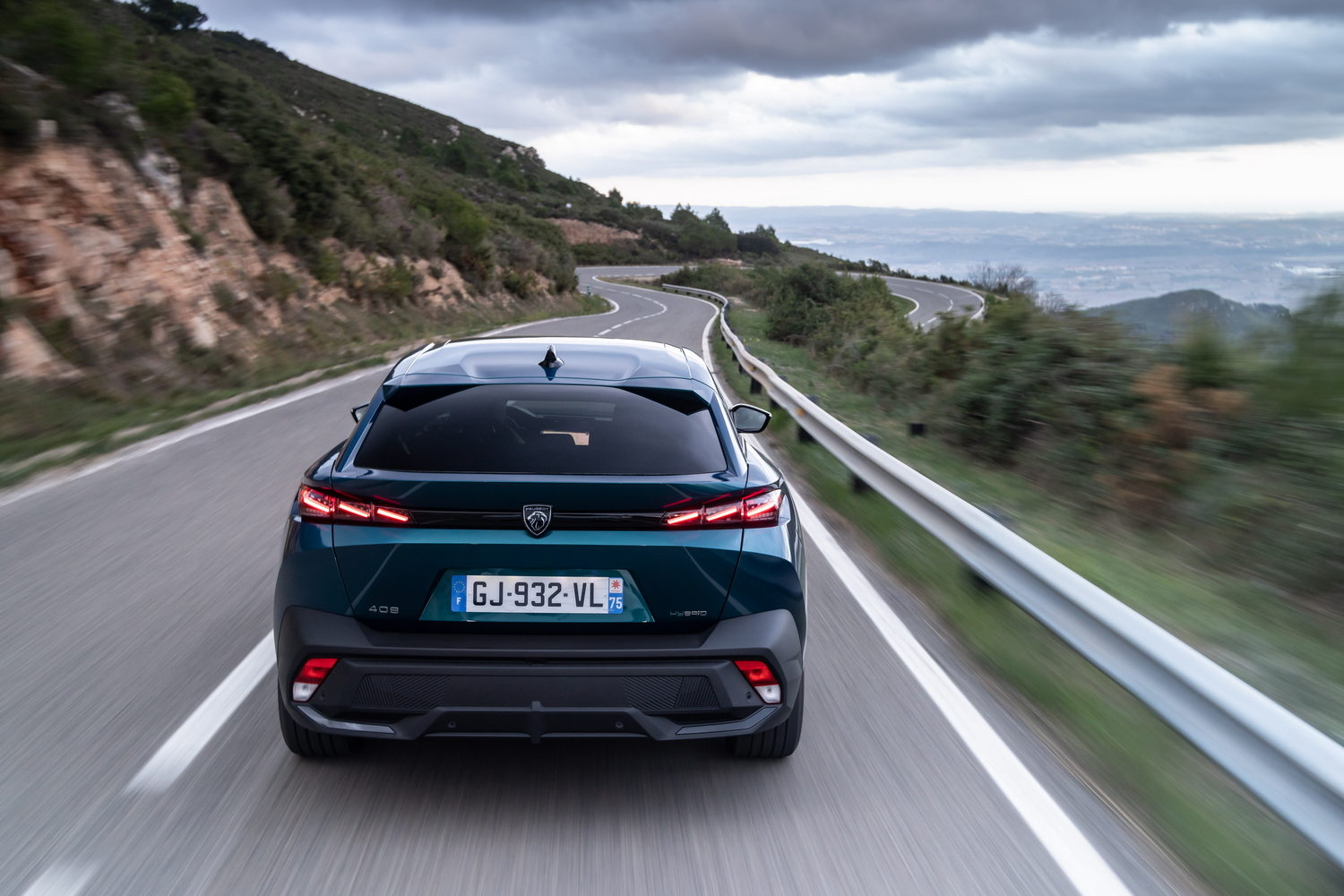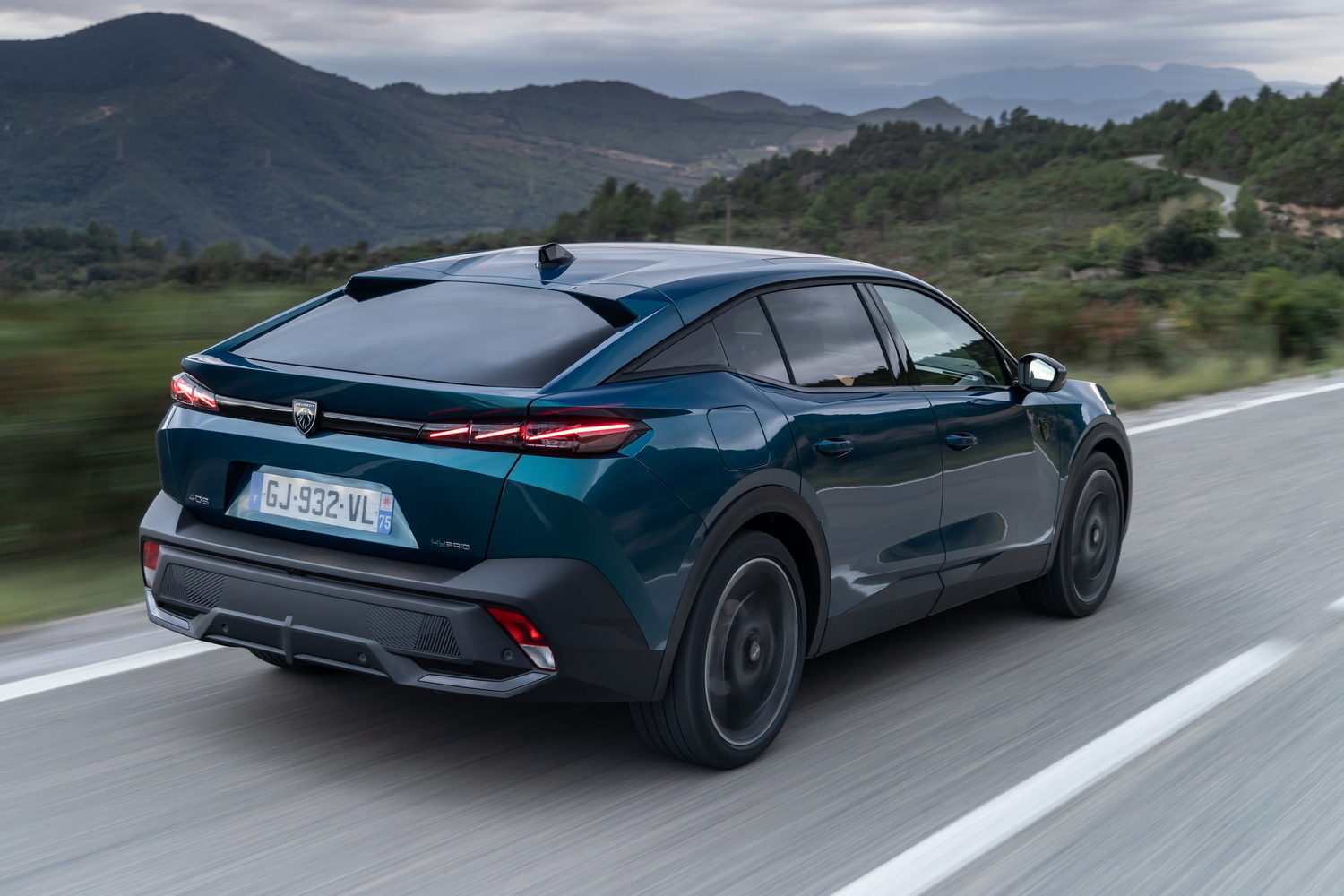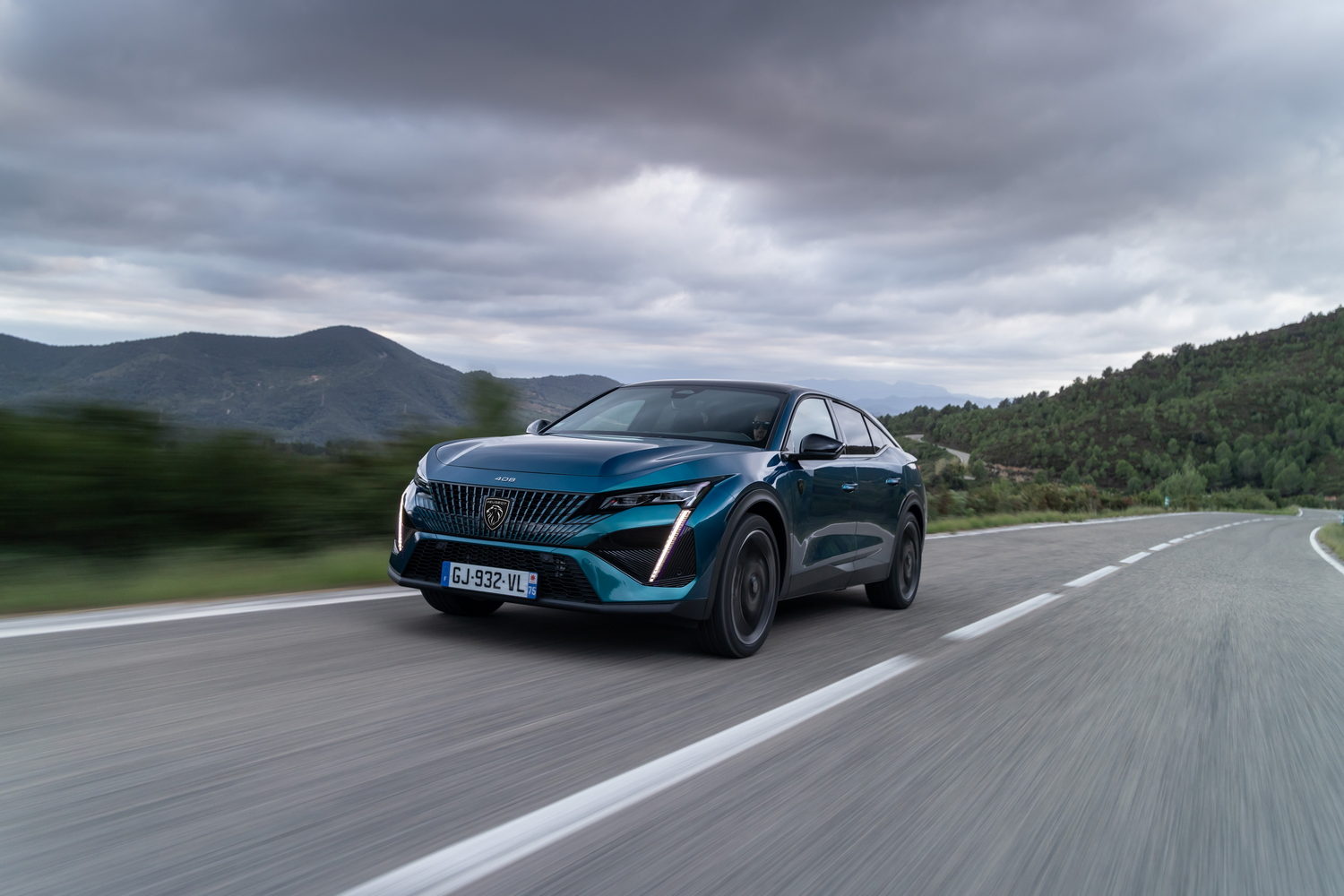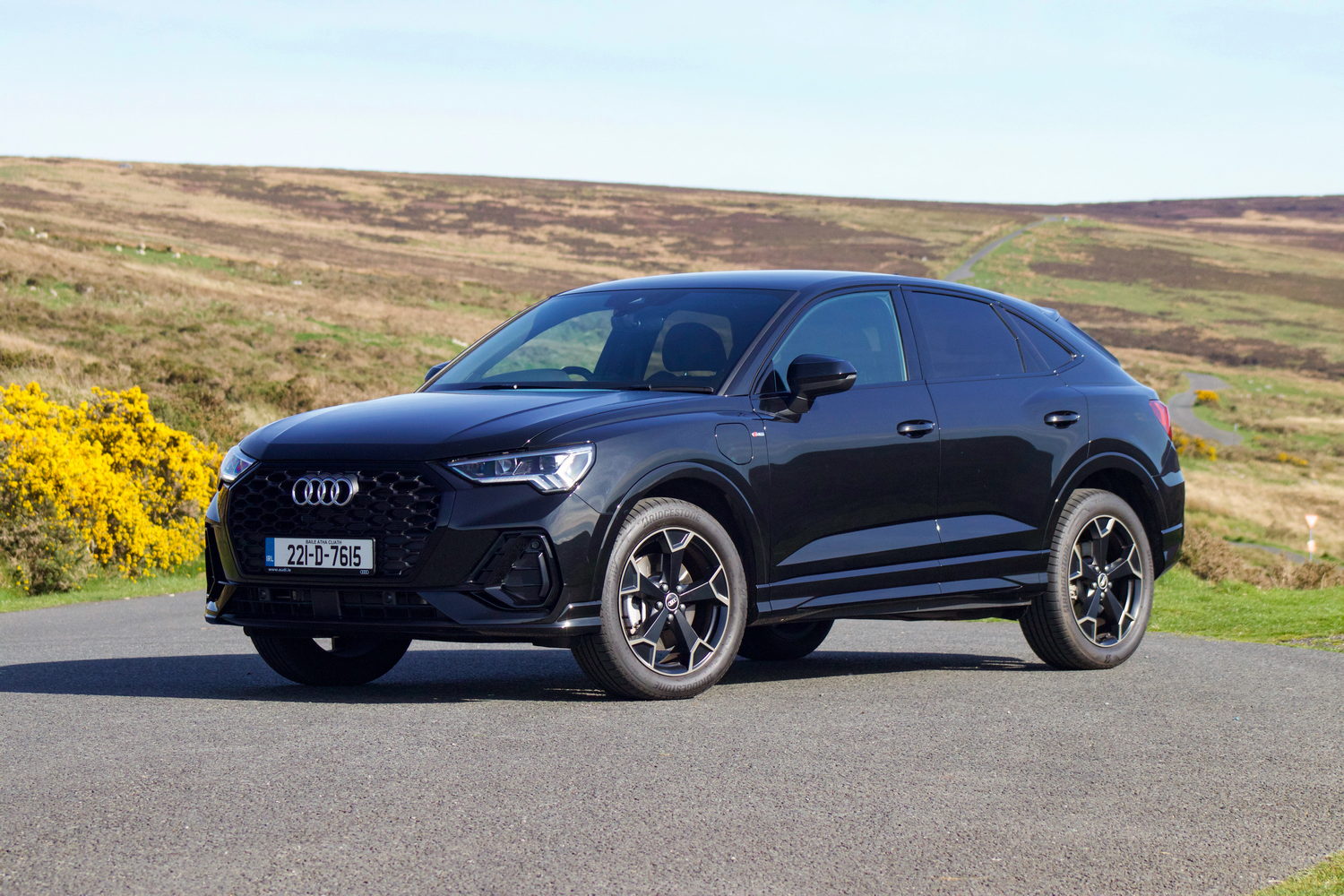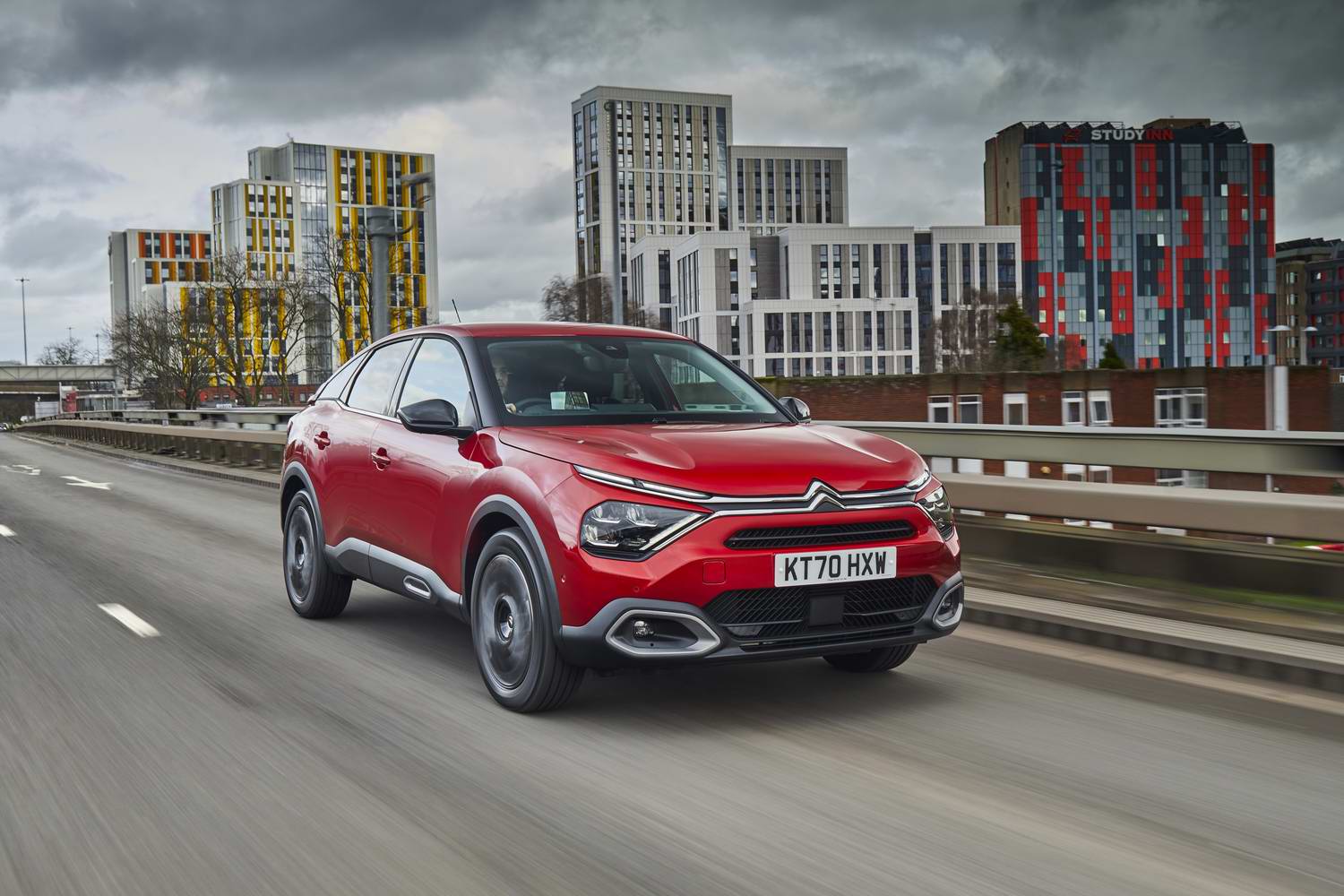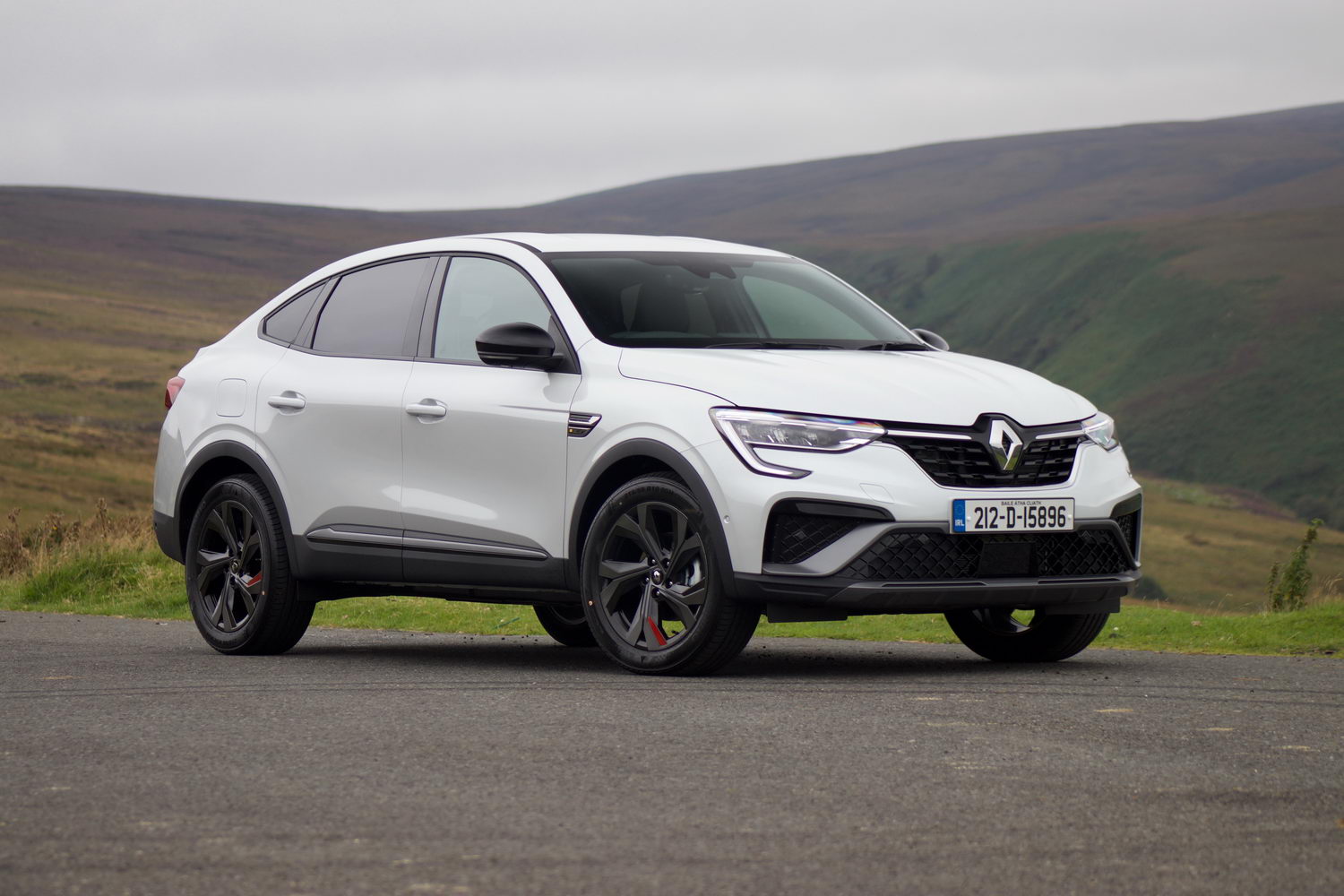The idea of blurring the lines between SUVs and fastbacks is nothing new - the BMW X6 started the craze almost 15 years ago, and countless brands have followed the German company's lead. The latest to do so is Peugeot, which has created a new family car called the 408 to sit in a middle ground between the 3008 SUV and 308 hatchback models. That puts it into the firing line of fellow French products - the Citroen C4 and Renault Arkana - and even more premium models such as the Audi Q3 Sportback. It also, arguably, competes with the Volvo C40 and Polestar 2. An electric version will come to challenge those cars in the not-too-distant future, but for now we've put the flagship plug-in hybrid version through its paces before it arrives in Ireland in February 2023.
In the metal
It isn't easy to pigeonhole the new Peugeot 408, which sits between family hatchbacks such as the Volkswagen Golf, family SUVs such as the Nissan Qashqai and saloons such as the VW Passat. Peugeot will be hoping the 408 can lure customers away from all those cars, and it's aiming to do that with a very striking exterior design.
Whether you regard it as attractive will be a question of taste, but we think it's a noticeable and interesting car to look at, if not classically beautiful. Peugeot is busily building a solid reputation for itself when it comes to styling, and the 408 does nothing to damage that too much. Maybe it is trying a little too hard, but we wouldn't call it ugly.
Unfortunately, although the 408 is quite a big car - it's only marginally shorter than the Peugeot 508 saloon - the interior feels no bigger than that of the 308 family hatchback. The 408's cabin doesn't feel especially wide, and both the driver and passenger will feel as though they're competing for space on the central armrest, especially if they're a little broad about the beam. Life isn't much better for those in the back, assuming they're adults. While the length of the 408 means there's plenty of rear legroom, the fastback shape means headroom is decidedly tight, especially for passengers of above-average height. Worse, the top of the doors is way below the roof lining, which means the door apertures feel a little bit short, so it's quite easy to bang your head as you get in or out.
Boot space, on the other hand, is much more impressive. The basic, petrol-powered 408 offers a massive 536 litres of carrying capacity up to the parcel shelf, making the 408 considerably more spacious than the already capacious 308 hatchback and only slightly less commodious than the 308 SW estate. However, specifying the high-end Focal hi-fi system cuts that boot space to a (still-respectable) 508 litres, while choosing the plug-in hybrid version reduces luggage capacity to 471 litres. Choose a hybrid with the Focal sound system and you get just 454 litres of boot space - only a little more than a 308 hatch.
The 408's cabin design isn't much different to that of the 308, either. The dashboard is more or less identical, with the same 3D digital instrument display joined by a big central touchscreen and a relatively clean design. Just a handful of buttons can be found on the dash, but there is a bank of touch-sensitive switches below the main touchscreen. An extension of the infotainment system, these buttons can be customised to your needs, allowing you to tailor shortcuts to different functions.
As with the 308, connectivity plays a large part in the tech experience, and Peugeot has made sure the Android Auto and Apple CarPlay smartphone integration technology is standard across the range. That's good, because the touchscreen isn't especially easy to use. This wouldn't be so bad were the screen solely responsible for multimedia and navigation, but Peugeot has also tasked it with housing the controls for the hybrid system and the climate control, both of which are unnecessarily awkward to use as a result.
That said, the 408's tech does have its upsides. The digital hotkeys are an inspired idea, and there's a handy shelf that provides wireless phone charging while keeping your handset securely held in place. The instrument cluster is a strong point, too, if it's a little bit messy looking in certain display modes.
But what impresses most is the quality. Gone are the days of Peugeot dashboards feeling like the tray in a box of chocolates, and the 408's materials all feel remarkably tactile, even if the swathe of plastic in front of the passenger doesn't look all that inspiring. The engineering that holds it all together feels robust, too, and the Peugeot is easily a match for the likes of Volkswagen, Ford and Hyundai.
Driving it
Buyers get a choice of three powertrains for the 408 to start with, all of which are tried-and-tested systems found elsewhere in Peugeot's line-up. All three run on petrol and drive the front wheels through an eight-speed automatic gearbox, while the two most powerful options combine a petrol engine with a plug-in hybrid system.
The cheapest option - the 1.2-litre turbocharged PureTech petrol engine - produces 130hp and offers competitive fuel consumption figures, officially using 5.9-6.9 litres of unleaded every 100km. However, the more powerful 1.6-litre hybrids - the 180hp Hybrid 180 and the 225hp Hybrid 225 - have rechargeable 12.4kWh batteries that allow them to cover up to 60km on electric power alone, cutting fuel use in the process. Officially, the Hybrid 225 gets through just over a litre of petrol every 100km.
As is always the way with plug-in hybrids, you'll likely be hard pushed to achieve such economy in the real world, particularly on a long drive, but if you mostly do journeys of less than about 50km, charge the battery regularly and only occasionally venture further afield, you might get quite close on average. It all depends on your lifestyle.
For those who don't want to burn any fuel at all, an e-408 electric version is also on the way, offering a more direct rival to the Citroen e-C4 (and forthcoming e-C4 X) and Volvo C40.
But we tested the range-topping Hybrid 225 in equally range-topping GT form. It's a combination we've seen before on the 308 and the Citroen C5 X - with which the 408 shares its architecture. As with those models, the hybrid system is generally pretty effective. Performance is adequate, rather than exceptional, but nobody is likely to grumble about a 0-100km/h time of just under eight seconds.
And anyway, the 408 doesn't encourage any kind of sporty or aggressive driving. It's clearly designed to prioritise comfort over handling, despite Peugeot's insistence on fitting an almost comically small steering wheel. That wheel, however, offers little in the way of feedback, but the steering is light and it makes the 408 relatively easy to manoeuvre, despite its length.
Key to the 408's focus on comfort, though, is the suspension, which has clearly been tuned for long-distance suppleness, although it's largely designed for European roads. On the silky asphalt of a Spanish motorway, it simply glides along, even if the odd expansion joint or pothole will catch the suspension napping and transmit a corresponding thump through the seat. How it will cope on more pockmarked Irish roads remains to be seen.
The electric motor is predictably quiet and the transition to petrol power is often imperceptible, but the petrol engine is a little noisy when you put your foot down. Another very minor issue is the 408's somewhat inert handling. Of course, agility will likely be way down customers' list of priorities, and the 408 is unquestionably tuned to feel safe, rather than exciting. It has a reasonable amount of grip, but the softness of the suspension and the ground clearance means it leans quite substantially in corners, which discourages you from throwing it around too much.
And despite the extra ground clearance compared with a conventional hatchback or saloon, the 408 doesn't have much in the way of off-road credentials. Yes, it'll traverse more undulating terrain than your average family car, but there's no all-wheel-drive system to provide extra traction. That's particularly apparent on any kind of loose or broken surface, where the plentiful torque of the hybrid's electric motor makes it easy to spin up the front wheels even with very small presses of the accelerator pedal.
What you get for your money
Irish prices for the Peugeot 408 start at just under €40,000, which pays for the basic Allure model powered by the 1.2-litre petrol engine. Upgrade to the 180hp plug-in hybrid and the price climbs to €44,995, but those who want the 225hp hybrid system tested here will need to skip the mid-range Allure Pack (from €41,995) and head for the top-of-the-range GT model. That comes at a cost, though. The GT starts from €44,995 when equipped with the petrol engine, but that rises to €52,495 for the most powerful hybrid system.
At least you get plenty of equipment. All 408s come with the touchscreen infotainment system, alloy wheels and a rear-view camera, as well as a digital instrument cluster and automatic two-zone climate control, while the GT versions add larger 19-inch alloy wheels, part-leather upholstery and an electrically operated tailgate. That's in addition to a distinctive grille with body-colour elements and the heated steering wheel.
That puts the plug-in 408 roughly on a par with the plug-in Audi Q3 Sportback when it comes to prices and specification. Although Peugeot is trying to move itself upmarket, the pricing initially looks high, but then it's only €1,500 more expensive than a Peugeot 308 SW with the same engine and similar equipment, albeit combined with a bit more space.
Summary
The Peugeot 408 is likely to appeal to those that approve of its distinctive design. There's no real reason to have one ahead of a 308 SW or a 3008 SUV unless the styling really floats your boat. The 408 is a solid new car wrapped in a dramatic body, and that should be enough to ensure it enjoys some success.

